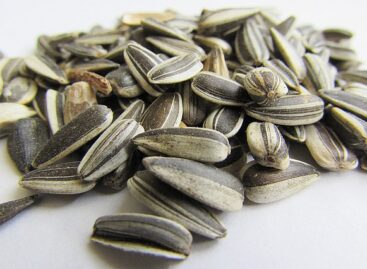Rising uncertainties from COVID-19 cloud medium-term agricultural prospects
The fight against the global COVID-19 pandemic is causing unprecedented uncertainties in global food supply chains, with potential bottlenecks in labour markets, input industries, agriculture production, food processing, transport and logistics, as well as shifts in demand for food and food services. In the short term, the economic and social impacts of the pandemic interrupt the generally positive medium-term outlook for global agricultural production and food consumption. Governments face the challenge to create balanced policies that address immediate needs, such as labour shortages and create durable conditions for the agricultural sector to ‘build back better,’ according to a new report presented today by OECD Secretary-General Angel Gurría and UN Food and Agriculture Organisation (FAO) Director-General QU Dongyu.

The joint OECD-FAO Agricultural Outlook 2020-2029 report finds that over the next ten years supply growth is going to outpace demand growth, causing real prices of most commodities to remain at or below their current levels. Fluctuations in the driving factors of supply and demand could lead to strong price variations around this general path. At the same time, a decrease in disposable incomes in low-income countries and households caused by COVID-19 is expected to depress demand in the early years of this outlook and could further undermine food security.
An expanding global population remains the main driver of demand growth, although the consumption patterns and projected trends vary across countries in line with their level of income and development. Average per capita food availability is projected to reach about 3,000 kcal and 85 g of protein per day by 2029. Due to the ongoing transition in global diets towards higher consumption of animal products, fats and other foods, the share of staples in the food basket is projected to decline by 2029 for all income groups. In particular, consumers in middle-income countries are expected to use their additional income to shift their diets away from staples towards higher value products. Meanwhile, environmental and health concerns in high-income countries are expected to support a transition from animal-based protein towards alternative sources of protein.
Open and transparent international markets will be increasingly important for food security, especially in countries where imports account for a large share of their total calorie and protein consumption. “A well-functioning, predictable international trade system can help ensure global food security and allow producers in exporting countries to thrive,” Mr Gurría said. “Experience has shown that trade restrictions are no recipe for food security.”
FAO Director-General Qu said: “We need better policies, more innovation, increased investments and greater inclusiveness to build dynamic, productive and resilient agricultural and food sectors.”
About 85 percent of global crop output growth over the next decade is expected to come from yield improvements resulting from higher input use, investments in production technology and better cultivation practices. Multiple harvests per year will account for another 10 percent of crop output growth, leaving only 5 percent to cropland expansion. By 2024, aquaculture production is projected to overtake capture fisheries as the most important source of fish worldwide. Global livestock production is expected to expand by 14 percent, faster than the projected increase in animal numbers. Feed use will expand in line with aquaculture and livestock production as feed efficiency improvements will be counterbalanced by an increase in feed intensity due to reduced backyard farming.
The Outlook underscores the continuing need to invest in building productive, resilient and sustainable food systems in the face of uncertainties. Beyond COVID-19, current challenges include the locust invasion in East Africa and Asia, the continued spread of African swine fever, more frequent extreme climatic events, and trade tensions among major trading powers. The food system will also need to adapt to evolving diets and consumer preferences and take advantage of digital innovations in agro-food supply chains. Innovation will remain critical in improving the resilience of food systems in the face of multiple challenges.
Assuming the continuation of current policies and technologies, agricultural greenhouse gas emissions are projected to grow by 0.5 percent annually, indicating a reduction in agriculture’s carbon intensity. Livestock will account for 80 percent of this global increase. Nevertheless, without additional efforts, this slowdown will still fall short of what the agricultural sector could and should do to contribute to the Paris Agreement targets for fighting climate change.
Related news
The Ministry of Agriculture has issued a notice on the use of ENAR data in support policy
In the case of animal-based subsidies financed from EU funds,…
Read more >Farmer-centric agricultural policy after 2027 receives unanimous support
The EU member states’ agriculture ministers have adopted Council conclusions…
Read more >Slow but steady growth in sunflower producer prices
Oil World experts expect a global sunflower seed harvest of…
Read more >Related news
Recognition of Consumer Protection Excellence: Honoring the Best of 2024
This year’s outstanding consumer protection officers and special award recipients…
Read more >KSH: industrial production decreased by 0.2 percent in October
In October, the volume of industrial production fell by 0.2…
Read more >Technological advancements and business travel
The latest research from International Workplace Group (IWG), the leading…
Read more >








